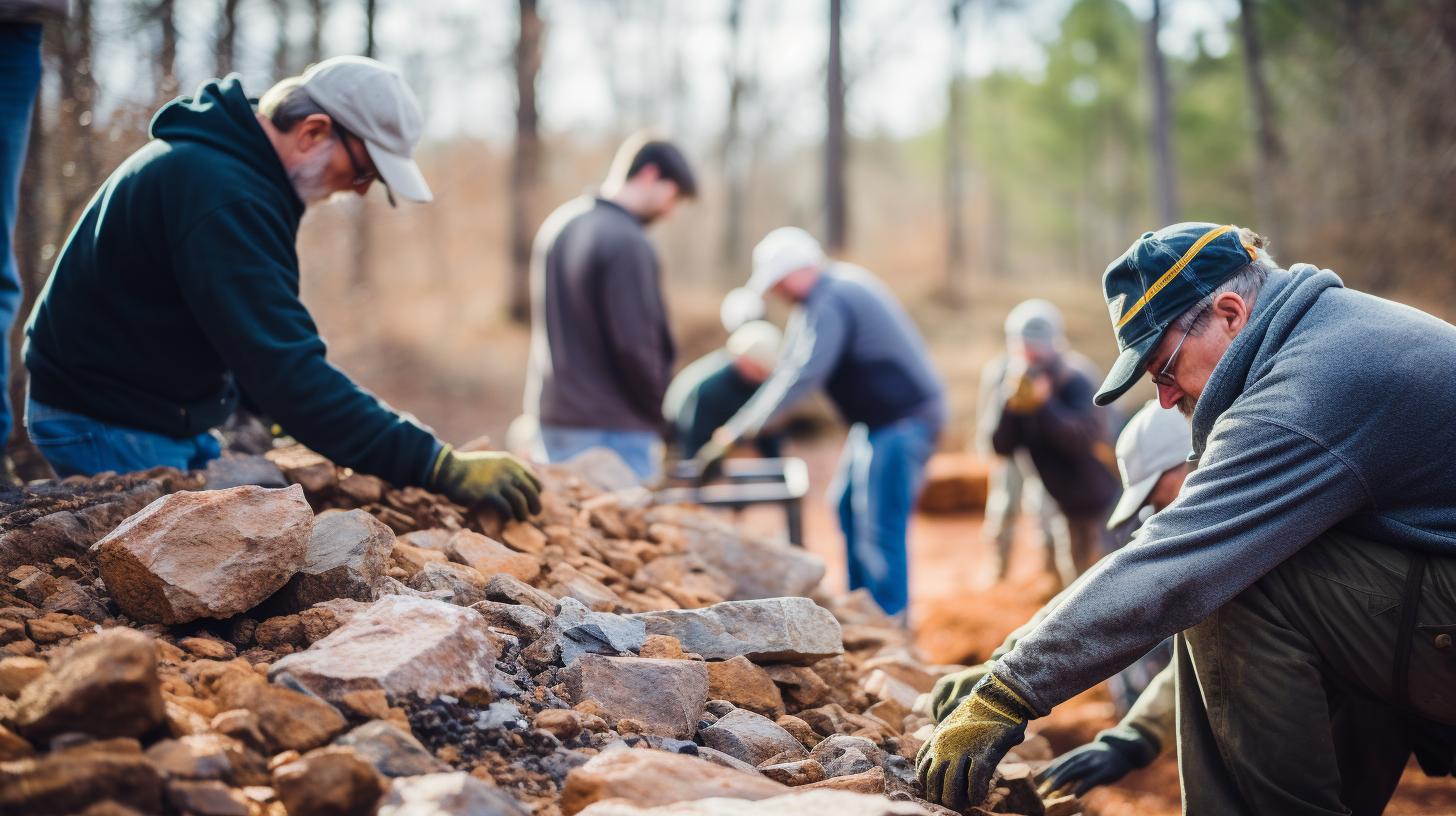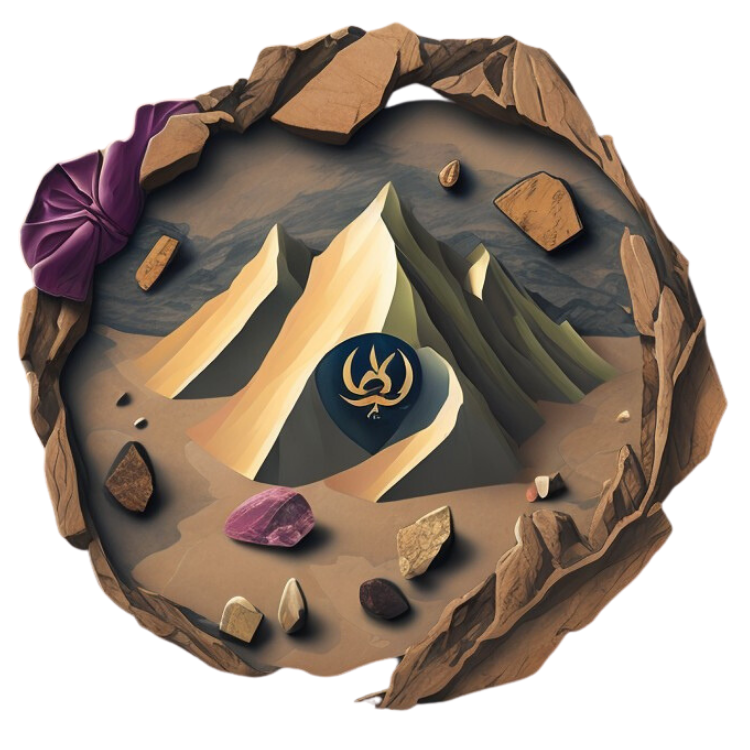
Have you ever wondered how experienced rockhounds seem to effortlessly unearth dazzling crystals, vibrant agates, or rare fossils? The secret lies in knowing what to look for. Just like a detective searching for clues, a skilled rockhound can read the signs and patterns hidden in the Earth's landscape, leading them to extraordinary finds.
Whether you're a seasoned rockhound or just starting, these tips and tricks will help you hone your observation skills, understand geological clues, and increase your chances of discovering hidden treasures.
Basic Knowledge and Preparation
1. Research and Preparation: Lay the Groundwork for Success
- Location, Location, Location: Research potential rockhounding sites based on geology, known finds, and accessibility. Look for areas with exposed rock formations, active mines, or known deposits of the specimens you're interested in.
- Target Your Search: Decide what you're looking for. Are you interested in colorful agates, sparkling crystals, or ancient fossils? Each type of specimen has unique characteristics and is often found in specific geological environments.
- Gather Your Tools: Assemble your rockhounding kit with essential tools like a rock hammer, chisel, magnifying glass, field guide, and safety gear (gloves, goggles). A GPS device or a geological map of the area can also be helpful.
2. Visual Clues: Decipher the Language of Rocks
- Color: Many minerals have distinctive colors, like the deep purple of amethyst or the vibrant green of malachite. However, color can be misleading, as some minerals can occur in a variety of hues.
- Texture: Observe the surface of rocks and minerals. Are they smooth, rough, crystalline, or layered? Texture can provide clues about their formation and composition.
- Luster: Luster describes how light reflects off a mineral's surface. Common lusters include metallic (like pyrite), vitreous (like quartz), and pearly (like talc).
- Crystal Form: Some minerals form characteristic crystal shapes, like the hexagonal prisms of quartz or the cubic crystals of pyrite. Learning to recognize these shapes can help you quickly identify certain minerals.
3. Geologic Context: Understand the Big Picture
- Rock Formations: Different rock formations are associated with specific types of minerals and fossils. For example, limestone often contains fossils, while igneous rocks like granite can contain crystals.
- Geological Maps: Use geological maps to identify the types of rocks present in the area and locate potential hotspots for your desired specimens.
- Outcrops and Exposures: Look for natural outcrops or road cuts where rocks are exposed, providing a window into the Earth's layers.
- Mining History: Research the history of mining in the area, as abandoned mines or tailings piles can be fruitful rockhounding sites.
4. Other Clues: Seek Out Hidden Treasures
- Vugs and Cavities: Vugs are small cavities in rocks that can contain crystals. Look for openings or irregularities in the rock surface.
- Fractures and Veins: Minerals often form in fractures or veins within rocks. Examine cracks and crevices for signs of mineralization.
- Float: Float refers to loose pieces of rock or mineral found on the ground. These can indicate larger deposits nearby and lead you to the source.
Advanced Tips & Tricks: Level Up Your Skills
As you gain experience, you can incorporate more advanced techniques into your rockhounding arsenal:
- UV Light: Certain minerals exhibit fluorescence under ultraviolet (UV) light, making them easier to spot in the dark.
- Specific Gravity: Learn to estimate the density of rocks and minerals. Specific gravity can be a helpful tool for identifying certain specimens.
- Hardness Test: Use a hardness test kit to determine the relative hardness of minerals. This is a valuable tool for identification.
- Chemical Tests: In some cases, simple chemical tests (like acid tests) can help identify specific minerals.
Field Techniques for Finding Specimens
Effective search strategies can significantly increase your chances of uncovering hidden treasures during your rockhounding adventures. Here are some essential techniques to master:
- Surface Scanning: Walk slowly and methodically, scanning the ground for any signs of color, sparkle, or unusual shapes. Train your eyes to spot subtle clues, like the glint of a crystal or the weathered edge of a fossil. Pay particular attention to areas where erosion or weathering has exposed fresh surfaces.
- Rock Breaking (Ethical Considerations): If permitted and safe, use your rock hammer and chisel to split open rocks that show promising signs (like vugs or veins). Always wear safety glasses to protect your eyes from flying chips. Be mindful of the environment and avoid excessive damage to rock formations.
- Soil Sifting: Use a sifter or screen to separate loose soil and debris, revealing smaller gemstones, fossils, or mineral fragments that might otherwise be overlooked. This technique is particularly useful in areas with sandy or gravelly soils.
- Digging (When Allowed): In some areas, digging may be permitted. If so, use a shovel or trowel to carefully excavate promising areas, paying close attention to any changes in soil color or texture that might indicate the presence of specimens. Always fill in any holes you create to minimize your impact on the environment.
- Water Searching: Some areas, like dry washes or riverbeds, may yield interesting specimens after heavy rains. Look for colorful pebbles, agates, or fossils that have been washed downstream.
Specific Tips for Different Types of Rockhounding
Each type of rockhounding requires a slightly different approach and knowledge base:
- Gemstones: Focus on areas known for gemstone deposits, such as pegmatites, volcanic regions, or metamorphic zones. Look for vibrant colors, transparency, and clarity. Research the specific gemstones found in your area and learn their unique characteristics.
- Fossils: Search in sedimentary rock formations, such as limestone, shale, or sandstone. These rocks often contain fossilized remains of ancient organisms like shells, bones, or plant impressions. Look for unusual shapes, textures, or patterns in the rock that could indicate the presence of fossils.
- Minerals: Minerals can be found in a variety of geological settings, but often occur in veins or fractures within rocks. Look for mineral-rich zones, such as areas with hydrothermal activity or metamorphic rocks. Pay attention to crystal formations, color variations, and unique textures.
By combining these field techniques with your knowledge of geology, mineralogy, and local collecting sites, you'll increase your chances of uncovering hidden treasures and experiencing the thrill of discovery that makes rockhounding such a rewarding hobby.
Remember, the most important tool in your rockhounding arsenal is your curiosity and willingness to explore!
